Leaderboard
Popular Content
Showing content with the highest reputation since 05/06/25 in all areas
-
Dear friends Here are some pictures of my latest completed project. This was pretty much built from the original kit, no resin or photoetch. Seatbelts were created from Tamiya Masking tape. Some detail got sanded out in joining parts, so engraved panel lines had to be re-scribed in several places. Tungsten rods were used to represent some detail on top of the booms. There were like piano hinges, for the equipment bays. The seeker heads of the Red Top missiles were made from blobs of Micro Krystral Klear, after losing one of the original clear parts. The pitot probes, after breaking many times, were substituted with blunted needles. Considering the popularity of the brand, it is perhaps strange that this was my first Airfix kit. But now, I am sure I will be doing others. Sure, it has could use some refinement. For example, the antennas and missile fins are thick, and if it wasn't for trying to make this an "out of the box" build, I should have used some metal substitutes for better scale effect. But overall the fit between parts was good, the instructions were clear, the decals did what they were supposed to do. This was a relatively smooth journey. The decision of building the plane on the ground with the wings folded added a lot of complexity. In the Sea Vixen a relatively large part of the wing could be folded, making the wing sub-assembly heavy. Joining that to the fuselage/ wing root sub-assembly relies on two relatively flimsy brackets, and keeping them aligned and held long enough to obtain a firm bond is a job better suited for an octopus (preferably one with tiny opposable thumbs at the end of each arm). Adding the subsequent bits of the wing folding mechanism is also complex, and it is difficult getting the two wings to be at the same angle. I have no real solution for this other than that you need to try again and again, until it works. In my case this included breaking first attempts, and starting over. For an easier job, consider showing the wings deployed. Thanks for looking! If you want more details about the build, feel free to send me an email or visit my models web page, both in the signature panel below.97 points
-
I am proud to present my completed Zoukei Mura F-4D Phantom in 1/48. This was built in the markings of the 497 TFS “Nite Owls” This build really pushed me to the limit especially once I reached the decal stage. I had some major silvering issues which required quite a bit of work to resolve. With this build, I attempted to replicate the weathering I saw when reviewing numerous reference images as close as possible. Along with the kit, I also used the following aftermarket items: •Reskit - Missiles, FOD covers, and exhaust nozzle •Quinta Studio - Interior 3D decal set •3D-Chute-Expert - Landing gear set •Mini Craft Collections - Ejection seats •Eduard - Remove before flight flags WIP post can be found here: Cheers, Keith95 points
-
Finished today - 1:72 Panavia Tornado IDS, Aeronautica Militare, M.M. 7461, Operazione Locusta, Al Dhafra AB, Gulf War, January 1991. Revell kit + Aires resin cockpit and wheel bays, SBS resin nose with Master metal Pitot tube, Eduard PE set, Hasegawa Mk.83 bombs, Tauro Model decals and some scratch. Thanks for watching!90 points
-
Hi, Please find my recently completed Airfix Super Constellation. The raised panel lines were replaced by engraved detail. Decals by “Dutch Decals” and windows by VFD. Engines and Wheels by Plusmodel. Dihedral was increased. Port wing exhausts were not added and no upgrades in wheel wells, cockpit or interior to keep the build relatively simple. (Besides adding engraved panel lines) See link for the build report at the bottom. Comments, critique and feedback welcome. Thanks for watching, Rgds, Rob89 points
-
A bit of background on this one. I got very excited when Airfix announced this one as I have very fond memories of these flying about the Dingwall area when I was growing up. Two memories are particularly strong. Standing on the 10th Tee at Strathpeffer, which was the highest part of the course and getting buzzed as the Jags flew over at very low level and also playing football one afternoon at Cullicudden on the Black Isle as they flew up the Cromarty Firth below us. I cannot say anything about the kit that hasn't already been said as it it truly a belter and any issues in the build were purely self-inflicted. WIP Here. Primed with Mr. Finishing Surfacer 1500 Black. Painted with Colourcoats Dark Sea Grey, Dark Green, Light Aircraft Grey and Light Admiralty Grey. Tamiya Rubber Black, Clear Green and Clear Red. Mr. Color Radome Tan. AK Super Chrome. Washed with Flory Dark Dirt, Citadel Nuln Oil, Agrax Earthshade and Seraphim Sepia. Oils used from Windsor & Newton. Finished with Windsor & Newton Galeria Satin Varnish. Thanks for looking, Cheers, Alistair88 points
-
Hello all. For quite some time, I have been inspired to do a diorama of and Auster and a DUKW based in the Antarctic. Years ago, I saw a low-res photograph which set the scene very nicely. Trouble was, I don't usually do dioramas, and I didn't have a clue how to go about it. A year or so ago, dear, kind Mr Airfix re-issued their Auster Antacrtic whith nice, new and plentiful markings, so I finally decided to give it a go. I had built the Auster many times in the past, but it's funny how that gives you rose-tinted spectacles. When I opened the box, I thought 'crumbs, what have I let myself in for?' Scouring the internet, I found an image of the kit subject in a fetching shade of orange which nicely matched the original picture I had seen (colour-wise, not serial number wise), and more importantly, it gave me some idea of what the ski undercarriage should look like, rather than what Airfix did back in the 1950's. Having taken that step, I also found that I wanted (needed more like) to do some other improvements, so I downloaded another manufacturer's instructions which showed the tubular interior, and the rest is, as they say, history. One thing Airfix did for this release was to replace the glazing. They back-engineered it and the new version is absolutely fabulous, lovely and clear and not a sign of external framework, although some interior framing is shown on the inside of the glazing. When it came to the Antarctic setting. I needed an aircraft carrier, in this case probably the world's smallest as it was a GMC 2.5 Ton DUKW. I used the recently re-issued Italeri one. I needed to add mudguards as the kit supplied none, but in general this went together easily although I was not too happy with the wheels as they only had front faces, the backs were hollow. Not that it mattered for this build as they are underwater. The Ice flow was made up from a few layers of balsa wood, and covered with the very lightweight Pollyfilla as that seemed to give a nice texture. I found some resin figure which would liven up the scene. They are from Black Dog and are proper Polar Explorers. They have three poses, and two sets are supplied. Detail was good, and they were the first figures I had painted for quite some time. Anyway, enough waffle, well done if you've made it so far, now it's time for the photographs: This is only a scene inspired by the photograph so I know there are some things wrong and it may not have happened with this particular aircraft. If anyone knows how the Auster would have been secured to the platform, can you please let me know? I'm not sure if there would have been clasps over the ski or if retaining wires would have been attached., but I seriously doubt that friction would have been the answer. Thanks for looking, all the best everyone Ray86 points
-
Hi all, a little puddle-jumper from me and another Bomber Command subject in the form of Fairey's underwhelming Battle, light bomber. This is the new(ish) 1/72nd Azur-Frrom Fairey Battle Mk.1 that I recently finished for last month's issue of Airfix Model World. We've been after a decent Battle for some time, especially in 1/72nd and this one didn't disappoint. A delightful little kit that builds up quickly and really looks the part when finished. The only down side, for me anyway, was the overdone fabric effect on the ailerons and elevators. This was relatively straightforward to sort out. Rather than endlessly trying to sand down and reshape the kit parts I did what I normally do and raided the spares box. I managed to find some suitable replacements (can't remember which kit, unfortunately) that just needed reshaping and the addition of the three actuator hinges, per wing. Unfortunately the wing tip nav lights also needed a bit of work as they were moulded into the wing which I don't particularly care for. These were removed and small pieces of clear runner were shaped to match the profile of the wingtip. Before being glued into place, 1mm holes were drilled into each piece and Tamiya clear red and green, poured in. The landing lights were also replaced using a pair of Little-Lense reflective lenses and a superb Quinta Studios resin vickers K gun replaced the kit item. Another slight issue was that if you wanted the canopy open, due to the thickness of the styrene the pilot's sliding canopy didn't fit down over the rear section and sat too high. I opted to use a Falcon vac canopy (designed for the old Airfix abomination), which was hacked up and shaped to match the kit part. Due to it's inherent 'thinness' it sat perfectly. All in all very impressive, for what is a short-run kit.....hopefully Frrom will consider releasing the more successful trainer and target-tug variants in the future. I'm sure a few of these will certainly find a place on our Bomber Command SIG table. Finished as GR-F, L5048, of 301 (Polish) squadron, based at RAF Swinderby, Lincolnshire in August 1940. This was really just built as a prelude to the 1/48th Trumpeter version which will be started soon, now that all the replacement parts have been gathered...and there's a lot! Anyway, hope you approve and thanks for looking. 'Bomber' Melchie...(terror of the local swimming baths). Obligatory black and white...84 points
-
My 8th Harrier in 1:72 is finished - this time BAe Harrier GR.7A, ZD404, 33A "Lucy", Harrier Detachment, Kandahar 2006. Airfix kit + Pavla resin cockpit, exhausts and ailerons + Eduard TIALD pod + some scratch. Bombs are from Revell's Tornado and TACTS pod is from Hasegawa set. And here is an image of "Lucy" and "Michelle" Harriers in Kandahar. From the markings of the completed missions I guessed that these planes flew their missions in pair, with "Lucy" carrying guided bombs, while "Michelle" carried unguided weapons. I don't know if my conclusion is correct, but that was the reason why I decided on this weapon configuration for my "Lucy". And here is actress and model Lucy Pinder, after whom Harrier ZD404 was named in Afghanistan: 😎 Thanks for watching!83 points
-
After completing the 1/48 Jag in Desert Pink, I was keen to start the Eduard 1/72 limited edition 'Desert Babes' Tornado. I also picked up a overtree set with the original kit as it was going cheap on the Eduard site. So I decided that two Gulf War Tornados are better than one. One was completed with the Eduard Resin and Photo Etch and the second was out of the box. The plastic is stamped with Revell 1996. The clear parts (particularly small parts) were not great, this is why I left off the wing clear part. hope you like them82 points
-
Hi everyone, one of my recent builds where I combined the Arma Hobby Mustang Mk.III kit with Eduard 3D printed engine compartment. Since the engine set was in fact designed for their own P-51D kit there was some surgery needed to convert it into B version. This mostly comprised revision of the bottom engine compartment and omission or replacement of some items. Decals from the kit were used for markings of Wing Commander Stanisław Skalski, 133 Fighter Wing, RAF Coolham, Great Britain, Spring 1944. Cheers Libor79 points
-
A good kit, not a great kit. And if you want to see what can be done with the model, have a look at Stephen Allen's WIP For mine, I just reduced the OTT surface texture by sanding it down after two heavy coats of SMS primer which helped to fill in some of the hollows. I probably should have gone further as the real aircrafts surface is far subtler than what Trumpeter have moulded. Anyhoo..... Brengun flaps have been added as have brass gun barrels from Master Detail. Fuel dump pipes are from Quickboost. Tooo late I discovered the Quickboost exhaust pipes needed the "outlet lumps" sanded off the cowlings to fit the correct asymmetric length resin pipes. As I had already painted my model, I left it as OOB Decals are by Xtradecal and portray a 149 SQN machine as I wanted to pay homage to those early war Bomber Command crews who started delivering the war to Germany soon after the war commencing. The early attempts at dulling down the roundels really appealed to me as something different. Never mind those stonking great codes! Yes, I need to straighten that aerial mast too! Thanks for looking Bruce77 points
-
This is the second Hobby Boss 1/48 A-6 I've finished this year, and these kits are a bit of a slog. Please Tamiya, can we have a new one? To this kit I've added ResKit wheels, Hypersonic seats, exhausts and fin tip and Master turned metal accessories. The decals are a mix of AOA and Furball. I've made a lot of alterations and corrections, primarily the scratch built tail hook cover, corrected doppler radar cover, corrected surface details and reconfigured the wing tip lights. The finish is much more 'quilty' than I would like, principally because of all the erroneous rivet detail. It's an impressively sized beast, though! Comments welcome Jon77 points
-
Hi fellas. This is my latest build, an AC-47. I did this as my contribution to the Vietnam GB. Since my childhood i have wanted to build this iconic bird, so the Vietnam GB was a great chance to finally give it a go. I based this build on the newish Airfix kit. I also used a few parts from the old Airfix AC-47 kit. I decided to cut out a section of the fuselarge to show the interior - i don’t think it worked as well as i have hoped, but at least it’s possible to have look at the gun installations. I used Mini World miniguns on top of the old Airfix gun mounts. I also got some 3d printed ammo cans and scratch build the boxes for the flares to add some interest to the interior. The crew entry laddet is from the Hobby Boss kit and the gun sight and some antennas were scratch build. I also did some riveting to the wings and fuselarge. It is painted with Hataka and Ammo Mig acrylics. The weathering is done with AK water color pencils and oils. I tried to keep the weathering subtle but still showing some wear and sun fading. It was a fun build and i hope you like the photos. Thanks for stopping by.77 points
-
Hi all This is Hasegawa's 1:72 Hawkeye displayed on Italeri's carrier base with Fijimi's deck tractor and figure. Sorry about the messy workbench, that's as good as it gets. Hope you like it. Regards Glenn.75 points
-
This was something of a personal project for me. Firbeck, in the old West Riding of Yorkshire, was the closest WWII airfield to where I grew up and I’d often visited the old museum close by (now relocated to and expanded at Doncaster Aeroventure) and the excellent Black Lion pub in the village. About 25 years ago there used to hang above the fireplace in the Black Lion a large painting of ZR.F taking off from the old grass airstrip and since then I vowed to myself that one day I’d build a decent model of that Lysander. The advent of both the new Airfix kit and the superlative Wingleader book on the Lysander gave me all the impetus I needed to get started. The Wingleader book includes two full-page photos of ZR.F taken at Firbeck, although the location is not mentioned in the text (PP. 34-5). The copse in the background on page 35 is still identifiable today. The new Airfix kit is almost vice-free and an absolute pleasure to build. I only needed a little filler for the engine cowling and the horizontal panel line just in front of the windscreen. I did add a couple of extra details (e.g. metal wire for the aerial masts) and the 613 squadron codes + fin flashes came from an old Eduard kit in the stash. ZR.F was delivered to Firbeck on March 2, 1941. The squadron conducted tactical reconnaissance missions (anti-invasion) over the North Sea coast, training and gunnery flights, and gas trials close to the unfortunate burghers of Pocklington. 613 Sqn. seems to have departed Firbeck for Doncaster by mid-August and began converting to the Tomahawk Mk. II. All in all, research and building time very well spent!74 points
-
AJS37 Viggen, Tarangus 1/48 And another Viggen onna stick! This one is of the attacking persuasion and loaded with a camera pod and two Bk90 cluster boms. And as all ground movers it is in the famous Viggen splinter scheme. Had some small issues with silvering on the No 5 on the fit, I will try to remedy that later before delivery....yes it's another commission Anyways here are the pics Cheers!74 points
-
F-106 Delta Darts in 1/72 scale Meng kit : 5th FIS, Minot, South Dakota, 1975 Trumpeter kit : F-106B New Jersey ANG, Atlantic City Airport, 1987 Hasegawa kit : Michigan ANG, Selfridge, 1976 Hasegawa kit : 2nd FIS, Wurtsmith, Michigan, 1972 Having just finished the impressive Meng F-106A kit I thought I would post it up with the other Delta Darts on my shelves. The 2nd FIS aircraft (horizontal yellow fin stripe) was a rebuild that was completed way back in the 1990s. It was originally built around 1977 in 87th FIS markings (red bull on the fin - no, not the current kind found in a can and on F1 cars). The Michigan ANG example was built in the last few months using Bare Metal Foil decals from a Hasegawa kit that had been in various attics for 40 years or so! The Trumpeter F-106B was also finished fairly recently. Anyway - on with the Meng. A very complete kit with lots of fine detail. Complete intake trunking and exhaust are included and look really good. The undercarriage and weapons bay assemblies are quite complex with numerous small parts and were quite fiddly to assemble. The instructions are reasonably clear but the location of some of those parts in the weapons bay could have been clearer. A very fine photo etch sheet is included which provides extremely small parts for the weapons bay doors as well as a boarding ladder. I discovered that photo etch was beyond my skills in this case and having ruined the ladder trying to bend it into shape, consigned the rest of the sheet to the bin. I did use some 3D printed decals for the cockpit and avionics bays though. I used the Kelik item K72112 which looked fantastic.72 points
-
JA37Di Viggen onna stick. Yet another commission build has reached fruition. I'm slowly working my way through all commission builds to do...but I'm starting to see the light at the end of the tunnel. I'm longing for an absurd build for myself. Still some to do before that. Well, this is another Tarangus build with all the usual ups and downs. Loaded it up with AMRAAMs and 'winders, it was a beast for it's time. Here are the much awaited pics https://hosting.photobucket.com/a6dbf8b3-ea1f-4d4a-82ac-c289e0c5d362/0df81d39-ab7e-482a-9f5d-5ff1901d8f62.jpg https://hosting.photobucket.com/a6dbf8b3-ea1f-4d4a-82ac-c289e0c5d362/c36cba59-670c-4fcd-963e-596317cecdbf.jpg https://hosting.photobucket.com/a6dbf8b3-ea1f-4d4a-82ac-c289e0c5d362/942f1273-d283-4826-8ed6-8a008b13bfdd.jpg Cheers!71 points
-
Hi all! My most recent model, finished today! Very good model but great care must be taken not to spoil the small surface details. There are some problems with some of the fittings, but nothing that detracts from the model. The assembly engineering could be simpler, resulting in an easier and less stressful assembly at times. I really liked this project and was very happy with the result. I hope you like it as much as I did. Have a good week everyone, Claudio69 points
-
Dear fellow Britmodellers, after a long absence from the workbench I report back with my 1/72 Revell Fw-200A Transport. The model was built from the box and painted with Mr.Hobby acrylics. Photographs by Wolfgang Rabel. Due to their age the kit decals are of poor quality. I swapped the national markings and walkways with aftermarket replacements and only used the code letters (note that the white frame around "DI" is out of register) from the original sheet. Thank you for your interest in this topic.69 points
-
Buffalo Mk.I, ex RAAF No. 21 squadron, Dutch East Indies Air Force, Andir (Java) air base, March 1942. Almost from the box, I have just added a printed gunsight by U3D and Master pitot tube. All paints are AK Real Colors, decals by Dutch Decals and Gunze varnish. Thanks for looking.69 points
-
This is the old (1962?) Airfix Lightning, built largely OOB: I didn't make many changes: * cockpit and seat detail from card and scraps * plunge moulded canopy * rolled and crinkled paper jet pipes * used Firestreaks from Sword T.4/5 kit * tailplanes trimmed back by 3mm * decals mix of kit's own, Sword T.4/5 and Xtradecal It was painted with brushed Revell acrylic silver and the wing walk lines were Humbrol acrylic black applied with a spring bow pen and ruler. Varnished with Johnsons multi-surface polish. While clearly it isn't remotely state of the art, it's a well-fitting kit and an enjoyable build. The build thread is here if you are interested. Thanks for looking, Adrian69 points
-
Good day, This subject was suggested to me from a good friend. The highlights of this particular project are as follows…………….. 1. Exhaust section A. Open / end side of nozzle : Gunze Burnt Iron ( base color ), Gunze Silver dry brush on ends. Tamiya Copper XF-6 dry brush. Tamiya black wash B. Inner section : Tamiya Metallic Grey XF-56 ( base color ), Tamiya Gold X-31, Tamiya Purple X-16 dry brush, Tamiya black wash C. Heat shield : AK Extreme Steel, Tamiya black wash 2. Airframe : AK Air ADC Grey ( #AK11867 / FS16473 ), Ammo Light Grey Wash ( #A.Mig-1600 ), Tamiya NATO Black XF-69 Anti Glare panel, Tamiya Flat Black XF-1 Nose radome cover, Tamiya Black X-1 Flir end 3. Cockpit A. Ejection Seats : AK English Grey #AK11020, Tamiya Black wash, Gunze Silver dry brush, Tamiya Olive Drab XF-62 seat cushions, Tamiya Khaki Drab XF-51 seat belts. B. Interior : AK Air Dark Gull Grey ( #AK11884 / FS36231 ), Tamiya black wash, Tamiya Titanium Silver X-32 dry brush 4. Landing gear struts, bays & intake : Tamiya Flat White XF-2, Tamiya Chrome Silver X-11, Tamiya black wash 5. Decals : Caracal F-101B Voodoo Air National Guard #CD72011 6. Misc : True Details resin ejection seats, Master metal nose pitot tube, plumbers putty & fishing sinkers for nose ballast Despite the age of this kit, I found it to be still up to modern standards of very good fit between parts, fine recessed panel lines, and excellent detail. The instruction sheet was a bit vague but workable and pretty much straightforward. I added True Details resin ejection seats as the ones provided with the kit were very basic in detail. I chose not to weather this one too much as ANG aircraft were kept somewhat clean for the most part. Oddly, the nose landing gear was too “short” and fabricated some scrap sprue into an extension in order to have the airframe sit properly. Unfortunately there are no alignment pins for any of the three landing gear struts but they hold well after overnight setting. I tried no less than four different color combinations to find the appearance that I was seeking with the exhaust sections. What I listed in the highlights is what I felt looked best. Apart from the landing gear assemblies, this is a very nice kit. It`s too bad that it has been out of production for so long as the F-101 is a subject lacking in 72nd scale. I recommend it to those with a bit more experience. Thank you in advance, Mike69 points
-
This is the Academy 1/72 Boeing C-97A Strato-Freighter build as an HC-97G Strato-Rescuer. In the early '60 the US Air Force search and rescue strategy was to have a high powered long range helicopter and a long range fixed wing aircraft. At the time the Sikorsky H-3 filled the helicopter role and the Douglas SC-54D* as the fixed wing aircraft with the plan to have the HC-130** replace the SC-54. But the SC-54's where reaching their end-of-life and the HC-130's were not available. So the Air Force turned to surplus Boeing KC-97G's as an interim solution and 22 were converted. These had the refueling gear removed and the origin rear cargo reinstalled along with additional radars. This gave them the capability to drop supplies, rafts and para rescuers. The Academy kit was derived from their B-50 kit with a new sprue for the fuselage and cockpit interior. Unfortunately what Academy did not realize was that the C-97's had different R4360 engines that had a redesigned exhaust. Not a big deal but Cobra Models, now Lone Star Models, makes a correction set with new engine cowling and exhaust so I ordered one. Unfortunately I found the quality of the cowling castings to be so poor with pin holes and bubbles as to be unusable. With some work I was able to salvage the exhaust and use them with the kit cowlings. The kit comes with a very descent cockpit interior. Interestingly the pilot's seats have shoulder harnesses but no seatbelts, the flight engineer has seatbelts but no shoulder harnesses and the navigator has neither. With all the windows you can get a pretty good look at the interior so if you can find one the Eduard C-97 interior sets it might be a good investment. Unlike the cockpit there was absolutely no fuselage interior, not even a cabin floor. This leaves you with a large thin walled plastic tube that flexes enough when handled to open any non reinforced seams. I made the The additional antennas on top and bottom of the fuselage from styrene strips. If you use the KC-97L kit it includes the upper AN/APX-29A IFF interrogator antenna. The now defunct Airway Graphics, AKA Liveries Unlimited, made a set of HC-97 decals and I was able to track down a partial set. I have found Academy decals to be problematic in the past with excessive silvering so I mostly used the Airway Graphics set and parts from the Wolfpak 72-077 sheet. As it happened the Academy decals I did use worked out fine. I used the Mr. Color interpretation of FS16473 ADC gray. Total build time was 16 days Next up I will be returning to my trainer series with an F11F-1 Tiger which served longer as a trainer then it did as a front line fighter. Enjoy * **68 points
-
When it appeared, the Airfix Hs126 was rightly considered the best; the kit is not free from defects and shortcomings, but once some modifications have been made (and above all with various self-built parts), the finished model makes an excellent impression. The model I propose to you, built way back in 1985, is a Hs126 B-1 of the 2.(H)/14, operating in North Africa in 1941. Bands and 'wawe mirror' in RLM 79 sand (which show a rather unusual appearance) have been superimposed on the factory camouflage scheme in 70/71/65. The colors used are Gloy and the model is entirely painted with a brush. Hope you like it. Thanks for your attention-interest Giampiero Piva68 points
-
The 2nd of my Eduard P-40E's from the Royal Boxing. The first one is here. This one was done as an aircraft from No. 15 Sqn RNZAF using Ventura Decals. Everything else was from the kit but I did add my own antenna attachments. I wondered about the shade Malcolm from Ventura chose but figured he's spent way more time on this than I so decided to go with his interpretation. The B & W pictures do suggest a lightened shade but I'm not good with interpreting colour from B & W images. Ultimately we'll never know for sure and TBH I doesn't really bother me either way. I like it. Most of the paint used was per the instructions. The main colours used were as follows: Dark Green - Mr Color C330 Modern RAF Dark Green Dark Earth - Mr Color C369 Dark earth, some yellow, and some radome tan Underside Sky - Tamiya XF21 Sky - This was because I read somewhere that the RNZAF P-40E's had a slightly greener shade on the underside. As this aircraft was taken over from the USAAF this was probably the wrong decision. Interior Green - Rather than the mix from the instructions I went for a colour similar to RAF's interior green. This was because I read somewhere that the RNZAF aircraft had lighter green interiors. Like the underside , as this aircraft was taken over from the USAAF this was probably the wrong decision. As usual more details for those interested on my blog but here's some photos66 points
-
Greeting all. Haven't posted here in awhile, so I thought I'd share this one. This is the old ancient Monogram kit, dated back to around the late 70's. The kit had some deficiencies, notably the undersized cowl. I replaced it with the old KMC correction set. But the correction set needed corrections itself. The outline profile needed to flatten a little. It's way to curvy compare to the real thing. And the panel hinges needed some corrections also. All the pylons wree discarded. They were way too useless to salvage. The Quickboost set is much better. The cockpit was replaced with the old CMK set, mainly because of the outstanding bucket seat it had. The landing gears was cut in half and replaced with a rod about 1.5mm longer. In my opinion, the legs are way too short. If you look at the box pics, the centerline fuel tank is almost touching the ground. I added new antenna configurations to the VNAF standard. Their's was much different than the USAF version. Those were the major corrections I made; there were others also. But I'll let the pictures do the talking. The model was completed in 2021, but I hadn't had a chance to take photos until recently. This ancient, old kit is way past its time, and is outclassed by the Tamiya kit by far. But here it is; the 1/48 scale Monogram A-1H Skyraider in marking of the VNAF 516 Fighter Squadron in 1967, Da Nang VN.66 points
-
After a prolonged battle, I have completed the old Short Rangoon vacform released by Contrail in the 1980's. This is my second attempt. The one I started in the 1980's when I was a teenager that ended in disaster. Fast forward a lot of years, and finding the kit at a dealer's table for a modest sum. Duly purchased and onto the workbench a year ago. I had mastered cutting out and sanding the parts. Assembly required a lot work and a lot more two-part autobody filler. The big challenge was getting the top wing on with the three engines with inverted struts in place. I made all of the engine struts out of brass rod (I know, they are round and not airfoil shaped) for strength. I made a jig and after hours of foul language and I managed to get the top wing on. The engine bearing struts were made overlong and went right through the bottom and top wings. After this hair-pulling experience I did not have the strength to rig it. I just tell everyone I used invisible thread and that is why you can't see it. I am pleased with the result, but I noticed the gap between the top and bottom wing is too small. Oh well, that is life. At any rate it looks like a Rangoon. The model was painted with Alclad paints and the guns were Aeroclub items in the stash. Roundels by Xtradecal (had to buy a 1/48 scale sheet to get the correct size for he wings), and serials from the kit decal sheet. My stash holds several old vacforms. What next, maybe a SARO London? Not this year.....! Cheers, Kerry Vancouver, Canada66 points
-
WIP here: Thanks for looking and all the support in the WIP Rob65 points
-
My first Eduard P-40E. Depicted as aircraft 41-36402 flown by Lt. Dallas A. Clinger of the 16th Fighter Squadron, 23rd Fighter Group, United States Army Air Force based in Kweilin China in January 1943. Detail is excellent from the box. Being the Royal boxing I used hte 3D Printed seats, exhausts and wheels. I also designed and 3D printed some antenna attachment points for the wing, fuselage and tail. The only disappointment detail wise are the kits plastic tubular exhaust And fit wise the areas I had issues were the rounded covers (Parts F14/F15) on the leading edge of the wings for the undercarriage bays, the underside light and sloppy fit of the 3D printed wheels and spinner/prop assembly. That said this is the best Eduard kit I have built to date. I enjoyed it so much I have nearly finished another. Detail is excellent from the box. The only disappointment detail wise are the kits plastic tubular exhausts. I would always replace them with Eduards 3D printed ones. Of course YMMV. I am looking forward to building the other variants. Full write up and heaps more pictures at my blog but here's some photos.65 points
-
This is my attempt at building the Italeri 1:48 Wessex UH5. The scheme I settled on was a Search And Rescue aircraft based in Culdrose, Cornwall as I had my honeymoon at Mullion Cove and we’d see these flying overhead almost every morning. Due to limited display space, I thought it made sense to acquire the Scale Warship rotor fold set which was quite fiddly but saves so much (display) space. I also bought the Eduard (external) PE set, unfortunately they’ve discontinued the interior version, which adds some extra nice detail. Almost impossible to see even though I’ve left to cabin door open, I added some equipment bags and rescue strops as well as some additional detail. I managed to attached the side antenna poles 90° off kilter, I decided to leave them incorrect as I figured I’d mess-up the paintwork if I removed them and re-stuck them, so squint your eyes and imagine them correctly positioned. You can read my build log here: until next time as always, any suggestions, criticisms or comments will be gratefully received. rgds John(shortCummins)64 points
-
I have finished my 1/48 Eduard Spitfire Vb representing my Aims decal options 'JU-T' 'Little Audrey' of 111 Sqn, December 1941, Debden, Essex. Note that the machine sports the latter blown hood and windscreen. The Eduard kit has been further detailed with the Eduard Mk V cockpit set and armament set, plus wheel and exhausts and radio compartment sets. The door is from Barracuda Studios to which I added a crowbar and the decals are from Aims sheet 48D028. I also used my Aims RAF wheel chocks. Paints are mostly MRP. Thanks, John64 points
-
Just adding this as reference for a current discussion in the WWII forum. For anyone else who might be interested, this is just a nostalgia build from Christmas / New Year 2022/3, straight out of the box with the exception of a bit of filing down to reprofile the wingtips, and some de-riveting. All brush-painted in Vallejo Air, which went on nicely though the camo colours are not really great and I will be custom mixing in future to use them up. Anyway, this is the second time I've built the kit, the first time being 50 years previously, and I quite like having it on the shelf even though it's a verrry old soldier indeed. Naturally, only once I had finished it did I find my Falcon canopy set for it . .64 points
-
Well, despite all the controversary, shaking of heads and numerous negative opinions I thought I'd give it a go anyway. Yes, its not perfect by a long way, but at the end of the day I think it still looks like a Barracuda. 🫣 I've tried to remedy some of the inaccuracies up to a point, and these included the removal of the leading edge bulge in front of the gear well ( although I personally think there is a small one there) replacement of the torpedo braces (the kit one is just downright wierd) and replacing the underfuselage glazing under the torpedo with a scratchbuilt bay. The kit gives you a glazed part for this. I didn't bother with the nose shape or the windscreen as it would have involved (apparently) some extensive re shaping. The only interior additions were some generic seatbelts. I also replaced the decals as they were far to bright and these came from various Xtradecal sheets. Anyway, make of it what you will but I'm quite happy I now have a Barracuda in my FAA collection. Thanks for looking. 20250613_150513 20250613_150535 20250613_150550 20250613_150605 20250613_15064063 points
-
Kinetic kit with Tauro decals and stencils. This is my entry in to the F-104 Group Build, more pics of this and other great builds over in the respective gallery.63 points
-
Latest off the bench is the Mikro-Mir Blackburn Beverly in the markings of 84 Squadron, Eastleigh, Kenya 1967 (Xtra decal decals). This was an interesting kit to do (). At times I thought it made Classic Airframes upmarket. If it had any more flash it would have been done for indecent exposure . That aside. It's the only game in town and we should be grateful for that. Time, patience and a lot of filler works well. Being a big lass she is a little bum heavy. Also she is very big. Larger than a Herc. Any way enough of my yacking on to the pics. Please feel free to comment etc. Thanks for looking. Dick62 points
-
Here is my recently completed SR-71 by Revell in 1/48th scale. The build posed a significant challenge, primarily because of the model’s impressive size (almost 70 cm), which made assembly and handling more demanding than usual. For the paintwork, I experimented with several shades from the Mr Paint range to accurately replicate the aircraft’s distinctive finish. For weathering, I tried the layered ink technique for the first time and was pleased with how it added depth and realism to the model’s surface. The result really brings out the sleek lines and iconic silhouette of the SR-71, a design that remains striking even today. It’s remarkable to reflect that this particular legendary jet first rolled off the production line nearly 60 years ago, on 22 July 1965.61 points
-
There is no WIP for this build, it's taken about twenty years to get it to the finishing line! A survivor of three house moves, some lost parts along the way. That along with a paint strip last week. I had purchased the Caracal decal sheet (CD72065), which is superb and offers ten options. Unfortunately I couldn't build the Black one as it had too many fuselage appendages for where I was with the build. I had always wanted a Black U-2, ever since the days as an Air Cadet, reading RAF Flying Review magazine. The exploits of Garry Powers etc, flying out of Japan with overflights of the USSR. The kit is a delight to build with some subtle contours but raised panel lines, these were lightly re-scribed. I opted for an o/a Glass Aluminium /Day-Glo Red scheme as a second alternative! I primed the wingtips etc, with Humbrol Yellow as a base (reading somewhere that it gave a good base for the Day-Glo). I then shot Tamiya TS-32, decanted into the airbrush, This was then given a coat of Tamiya Clear TS-13. This being a lacquer based paint pickled the Yellow! A strip was in order! I use a product called Oxytol, it's a water soluble stripper. Moving ahead, a chance search on the intergoogle and a pointer from my mate Tony O'Toole, gave me an all-over Black ship and a re=paint was in the offing. I's using more of the Taliya LP paints but an finding them increasingly expensive, due n the main to our poor exchange rate! Dulus have a range of Duco, solvent based lacquer paints in a 300ml can. There LP Primer (available in Grey or White) is styrene friendly, so I shot their Satin Black via my airbrush. The first coat was as decanted from the can, a second coat thinned approximately 30% was shot a s a final coat and left to dry overnight. The maintenance/warning placards are from the Caracal sheet the fin codes form the spares box. The base is a scrap piece of ply suitably cut to size, with the edges chamfered and given a coat of sanding sealer. The card is Carson sugar paper available in grey or sand and gives a reasonable representation of concrete and Fine Line marker. The RAF crest came from the net. The story or 'Operation Oldster' can be found via a net search. Thanks for looking in... Colin61 points
-
Deep in some rabbit hole the other day, for some reason I was watching a clip from a John Wayne movie, "They Were Expendable". We've all seen the ubiquitous AT-6 asJapanesezeros before and this movie has them. Less seen are the Douglas Dauntlas asJapaneseaircraft and this movie has those as well. I was just about to click off when the Duke comes under attack yet again but this time I was amazed at what was attacking. "Wait a second, is that a...." "Wow! It is, now THAT I've never seen before..." A perfect candidate for the collection. It was about the only olde 1/48 Monogram I did'n have but Evilbay fixed that for $12.00 and free shipping. Built as we did years ago, the "Hollywood Air Force" is strictly for quick fun. Assembled in about an hour and painted that night. Decals and weathering went on the next day. These old Monogram kits are a blast to put together, everything fell together perfectly. I used some Vallejo 71.298, FS36357 that I just grabbed but seems to match IJN grey perfectly. I would not hesitate to use it on a serious Japanese build. I don't know if I should build something more serious or jump onto the Glencoe Duck from "Murphy's War".61 points
-
For anyone familiar with the Battle of Midway, there's almost no need for introduction on this one. For those that aren't: The SBD Dauntless was the US Navy's primary carrier dive bomber at the beginning of US involvement in the Second World War and its most successful despite being considered nearly obsolete at the beginning. Nicknamed the "Slow But Deadly", it sank more enemy tonnage than any other dive bomber in the world. During the Battle of Midway, as the Japanese Navy's carriers sought battle at Midway Atoll, it was the SBD-3 Dauntless that delivered the killing blows to Japan's most powerful carrier force only six months after that same carrier force attacked Pearl Harbor. In a split-second decision, without which the US victory wouldn't have been as complete, this one aircraft, piloted by Lt. Richard Halsey "Dick" Best of VB-6 of the USS Enterprise, delivered the lone bomb that, in a single hit, sunk the Akagi, the flagship of Admiral Nagumo, and later in the day also attacking the Hiryu, the last remaining carrier of the battle. His actions that day rewarded him a Navy Cross and a Distinguished Flying Cross. - This build was a commission for a friend whose son had picked up an interest in the battle after watching the 2019 movie. Though meant to be more of a toy, I decided to build it to the degree of any of my other builds, and certainly didn't complain about the excuse to build an SBD myself. I finished it in the morning of the Battle of Midway's 83rd anniversary last June 4, only getting around to posting it here now. This was the boxing featuring the USS Lexington in the box art, meant to model SBD's participating in the Battle of Coral Sea, with the pre-Midway single machine gun at the rear gun position. As such, my only modification was 3D printing a pair of double-barrel machine guns. Other than that, and the decals for the SBD itself featuring Best's aircraft, which I designed myself and had printed by Siamdecal in Thailand, everything else is OOB. For the kit itself: This and the Hasegawa are pretty much the only choices for the SBD Dauntless (I believe the Academy is just a reboxing). For its age, the AM kit is pretty good though there are a few frustrations here and there. The cockpit assembly was somewhat tedious for what it was (At the end of the day it just looks like any other 1/48th OOB cockpit. Areas I had an issue with were the dive flaps, which were attached on the sprue in such a way that even if you were careful they came out warped and had to be kind of wrestled in place. I also had that issue for the three-piece canopy, which, if you wanted it open, would have to stack into each other, which naturally resulted in a lot of sanding and fitting. Finally, the decals - Pretty sure my boxing is just old, but almost all of mine shattered, and whichever ones didn't, silvered quite a bit. Overall decent kit, still good for its age, though not perfect. A couple other notes - - I'm aware that Dick Best himself described his aircraft as clean as they were relatively new, and photos of other SBDs near the time of Midway confirm a relatively clean although used aircraft. In the end I decided to go with more weathering anyway for my own practice of weathering techniques, something which led me to learn a lot from this build. - Alongside the OOB decals that silvered there are also a few that I had printed that silvered - some of these I'm not sure why, because they went down fine but a flat coat changed the color underneath. Still trying to figure out why this is. Thanks for reading!60 points
-
Going to Duxford in the early eighties you could often see one or two white Dakotas parked up, with bright coloured stripes on them. Part of the Air Atlantique fleet. And G-AMPO, with her green stripes stood out in my memory. So moving on to last year I picked up a Monogram 1/48 DC-3 and thought about those wonderful looking aircraft. Decals would be a struggle. Or would they? Ray at 26 Decals offered to scale up his 1/72 set. So here is the result of my plastic kit worrying and those decals prop decals were missing in the photos above but are now present And she has working lights & motors too Thanks for looking59 points
-
Good afternoon. I just finished the new tool 1/72 TBM-3 Avenger from Hobby Boss. I find it a really beautiful kit with a lot of detail inside out. I think it’s a down scaled version of their 1/48 kit. I added a little Eduard PE in the cockpit and bomb bay(for the Hasegawa kit), other than that it is out of the box. The fit is very good for the most part, but the smaller clear parts need some trimming to fit well. Painted with Hataka acrylics and weathered with A.Mig wash and AK water color pencils. The base is from Laser Model Graver. Here it is and thanks for stopping by.59 points
-
I finished the 1/72 RS Dornier 17P as F6+HM, which made a belly landing near Usquert on October 26th, 1939. The RS kit is a limited run kit - and as such rather crude in some places, but it has extremly fine panel lines. I replaced the kit's engines with 3d printed items from Metallic Details which were lovely. I became somewhat obsessed with the shape of the exhausts, which prompted me to buy an ICM Do 17Z kit. I also used that kit's landing gear and wheel wells. I painted the model with ATOM paints from Ammo - which are fantastic. The national markings all came from my spare decal collection (the oversized wing crosses are from a 1/32 111P set), and the aircraft's ID markings were made with custom masks made with my Silhouette Cameo. Build thread here: Thanks for looking!59 points
-
Hello all, Here is my recently completed 1/48 Tamiya F-4B, in the markings of VF-114 'Aardvarks'flying from the USS Kitty Hawk in April 1967. BuNo 153000 was delivered to the Navy in May 1966 serving with VF-121 before being transferred to VF-114 in July 1966. On the 24th April 1967, 'Linfield 210' was flying as part of a MiGCAP (Mig Combat Air Patrol) in support of a strike on Kep, crewed by Lt Charles Southwick and Ensign James Laing. The aircraft was hit by AAA early in the operation but continued on, eventually downing a MIG-17 with an AIM-9D. The crew were forced to eject over the Gulf of Tonkin due to the damage caused by the AAA and both were subsequently rescued. The build thread is below: Extras used: Eduard - Stencils and canopy mirrors Eduard Brassin - Ejection seat handles Furball - Decals Hypersonic - MB MK.5 ejection seats Quinta - Cockpit set Paints are from MRP with the weathering coming from a mixture of Flory wash, Abteilung oils and AK pencils. Thanks for looking Dave59 points
-
Built pretty much straight from the box except for some Eduard seatbelts. Despite my initial apprenhension regarding the rivets, after a brisk rub over with some Scotchbrite I think they're much more acceptable now, even in a silver scheme. I'd certainly have no qualms about building another one. The decals are from the kit and a spare sheet of Max decals for the later style Celtic Boss. Thanks for looking. 3 2 4 5 658 points
-
Hi all, thought it was about time to bother you with some pic`s of my latest CBI effort 🙂 My attempt at Smer`s 1/48 Walrus kit Finished as a Far East based aircraft in the `Shadow Compensating` paint scheme Built virtually as Mr Smer intended with just a few improvements here and there to disguise its shortcomings ( hopefully! ) Left out the dodgy guns and crew and closed the positions ( most of the photo`s I found whilst searching had covers fitted ) which saved having to detail the interior too much, yeah I know I`m lazy🙄 and sanded quite a bit off the wing and tailplane leading edges to make them less `Lego` like in appearance. Did some detailing externally, such as: wired the engine and made some exhaust stubs and piping, fashioned a landing light, some control surface actuators.... ......and made some, what I think are hydraulic pipes for the wing locking mechanism I noticed, from wire and a bit of side wall detail and seat belts in the cockpit Decals came from part of a `Classic Airframes` sheet I had hanging about Hope you enjoy, thanks for looking Cheers Russ57 points
-
Hello all, While looking for an interesting OH-6A chopper to build, I came across the AOA "Low level scouts" decal sheet (which is for 1/35 models). This includes one helicopter in a rather unusual (to me at least) camo scheme. Searching a bit further, it appeared that this particular helicopter was used for so-called "Snoopy Operations" over Vietnam, where OH-6A choppers were equipped with chemical sensors (XM-3 airborne personnel detectors) to detect human presence in the jungle. Such aircraft were also referred to as "Sniffers" and flew low-level missions, in conjuction with helicopter gunships, over the Vietnamese jungle. On the ARC forums, at the time when this AOA decal sheet was released, some pictures were shared of this particular airframe (see page 2 of this topic, copyright owner unknown): http://www.arcforums.com/forums/air/index.php?/topic/291968-new-decals-oh-6a-loach-in-the-vietnam-war/page/2/ This seemed an interesting Cayuse to build for this year Vietnam's GB. I used the 1/72 AZ Model kit as a basis, with some modifications: all four doors were removed, as per the reference pics, and the XM-3 detection equipment was scratched. I also used some PE parts from AZ Model's set, a Croco vacform canopy and added a bit of detail here and there. Decals are puzzled together from various decal sheets. Paints are Gunze, weathering was done with oils and a touch of pigment. Not the easiest kit to build, being short run with lots of flash on the parts, quite small and also with such a large canopy part, but I am pleased with how it turned out. For the diorama, I added Trumpeter's M706 Commando Armored Car, which was a nice side project to complete. Credits background picture: Freepik, https://www.freepik.com/free-photo/misty-morning-field-with-mountains-background_11678309.htm#query=desert foggy&position=2&from_view=search&track=ais WIP link: https://www.britmodeller.com/forums/index.php?/topic/235151900-oh-6a-cayuse-vietnam-1970/#comment-5245913 Thanks for looking, comments always welcome! Cheers, Patrick57 points
-
I am working on a large radio control model ship of HMS Ajax (1939) to 1/72 and I needed a catapult and Seafox. I built the Matchbox kit but replaced the cabane struts and aileron with brass rod for strength with the ship being a working model. The struts go right through the wings for strength as well. The markings were made up of generic roundel sheets and Modeldecal (Remember those?) serials. Representative rigging was monofilament run through holes drilled right through the wings and glued in place. The holes were all puttied and painted. I chose an overall silver dope scheme and weathered it with a wash of burnt umber and lamp black artist oil paints. The catapult was a Japanese one that came with a Jake aircraft from Hasegawa. Looking at the Japanese catapult, it resembled a RN when you cut away the front end. The catapult on AJAX was the type that extended when in use, so I tucked some front into the rest of the catapult. Near enough. It took a lot of staring at photos and watching a YouTube video of a RN training film on how to launch aircraft from a ship to understand how the catapult looked in storage and in use, and how the trolley was attached to it and the Seafox. The aircraft crane is scratchbuilt from wood and pearwood strips and primed. It needs a bit of cleaning up before painting, but it is done. Phew! Pearwood was ideal because it is strong and resilient (especially in the heat when the model is run on a pond) and has virtually no grain that shows through paint. These parts of the ship was a major bit of work, but despite my simplified approach, it looks quite effective for a working model at least. Cheers, Kerry57 points
-
Evening all, It's been a long time since I've been able to share a completed model on here due to a house move, so it's pleasing to finally have something new off the bench. This is the tidy little T-2C courtesy of Wolfpack. Built straight from the box using the Top Gun edition for something a little different, finished in mostly Mr Color paints. A few errors along the way but a nice kit to ease back into the swing of things with. Thanks for looking, comments welcomed Shaun56 points
-
IMG_0747 by Ben Brown, on Flickr LACI is perhaps best known for its series of 3D printed accessories for airliners such as flaps and engine pods but in recent years has branched out into complete aircraft kits such as gliders in 1/72 and 1/48 and also a lovely selection of M. Mignet’s Pou du Ciel in the Gentleman’s Scale. In fact they do five different boxings of the Pou – G-ADXS as seen here, ‘EBB, ‘FFI and ‘EEH plus a fabulous stripped down and skeletonised kit which is rather wonderful. Note – the Pou series has a bewildering series of variations of powerplant, rudder and bracing – they are NOT all the same and LACI has carefully researched each machine. IMG_0740 by Ben Brown, on Flickr I actually built the lovely skeleton version a while ago but it met it’s demise at the hands of an errant book ☹ 7E9B124D-1F65-4D77-831B-CD53C6E2A07C by Ben Brown, on Flickr The RFI is here https://www.britmodeller.com/forums/index.php?/topic/235107052-naked-and-a-flea-d-172-3d-printed-mignet-hm14-flying-flea-skellington/ 799EFF6B-DF94-4209-BF8B-08D122B3031F by Ben Brown, on Flickr In essence it is a very simple model – a fuselage complete with cockpit interior, a separate rudder, rear and front wings, two bracing struts, a prop and a pair of wheels. You also get two well moulded vacform windscreens. IMG_0742 by Ben Brown, on Flickr A good set of side cutters (I have a pair of DSPAIE ones I only use for 3d printed items) is essential to remove the forest of printing trees and the resin then sands easily to remove any nubs. Print striations are very fine, there were a few scuffs and nicks on the fuselage and wings. The fuselage is a marvellous piece of printing including as it does the engine and mount, wing mounting pylon and even the fuel line! The detail is exquisite if very very fragile and needs careful handling. The prop pushes the medium to its limit- on both Pou’s I’ve built the prop is so fine has a curl at each tip. IMG_0739 by Ben Brown, on Flickr Assembly is aided by clear instructions though no painting guide. ‘DXS was built by a Mr C.L. Storey and placed on display in his motor car showroom in Alexander Street, Southend. After a spell at the late lamented Southend Historic Aircraft Museum she can now be found suspended from the hangar at Breighton in the care of the Real Aeroplane Company. After the main parts were assembled the Pou was primed with Rustoleum White Plastic Primer then shot with Humbrol Metalcote polished aluminium – both from the rattlecan. There are several photos of the machine online which helped with painting. She appears to have a red read bulkhead and green interior. Detail painting was with Humbrol and Revell enamels. IMG_0743 by Ben Brown, on Flickr The two bracing struts supplied in 3D printed resin really aren’t up to the job as that scale thickness pylon (literally) is doing a lot of heavy lifting. So they were replaced with brass wire of the same diameter. The windscreen cut out easily and fitted perfectly. I must own to have forgotten to add a seatbelt – but Pou pilots eschewed such things as safety! The wheel axles could have been sized to provide the correct spacing for the wheels from the fuselage but fitted ok. IMG_0745 by Ben Brown, on Flickr The prop was painted in desert sand, dry brushed with dark earth then coated with clear orange. One thing I did notice from images online is that LACI missed the exhaust pipe on the starboard side – its quite large from the photos! I spoke to LACI who added the manifold fixtures to the cylinders but accepted they forgot to include the exhaust pipe. I used the smallest diameter plastic tube I had and fashioned a replacement. Probably slightly overscale but best I could do. Having attached the main parts I added the decals – the black registration letters were superb – I cut them closely for the wings and used them as provided in a chunk for the fuselage – reacted well to Set/Sol and no silvering. The Pou logo and rudder artwork went on fine – the edges of the rudder needed trimming with fine W&D after they had dried as they were slightly overscale and the edges would not fold down with setting solution. I then touched in the red round the edges. The printing on the red is a bit faint and pink-coloured even though there is a white layer of print underneath. Rigging wise as before I used stainless Oasis florist’s wire (80p a pack from Hobbycraft – it comes in straight lengths) cut to fit using photos and the rigging diagram in the instructions. Note again that Pou’s are often rigged differently. This added MUCH needed strength to the model! IMG_0744 by Ben Brown, on Flickr A coat of Klear and she was done. I thought I would add a figure as I did with the skeleton to give an idea of scale- Mr Storey with briefcase was added from the spares box (an old Airfix/Dapol railway figure I think). I recycled the white coaster used from the deceased skeleton Flea and she was done. The scheme chosen by LACI I think is ace and really suits the Pou – it’s a lovely kit but is very fragile and requires care in assembly. At around £17 its not cheap but is streets ahead of the old Aeroclub one. Here she is with a 1/200 Pou from Shed Models (RIP Chris). IMG_0746 by Ben Brown, on Flickr Hope you like her! TT IMG_0750 by Ben Brown, on Flickr IMG_0748 by Ben Brown, on Flickr56 points
This leaderboard is set to London/GMT+01:00

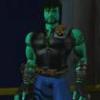
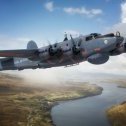

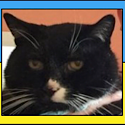



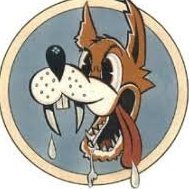
.thumb.jpg.ba34a9f6ddce411193946dbdcc7b5fe8.jpg)
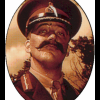

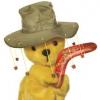
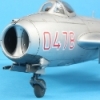
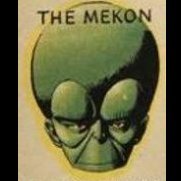
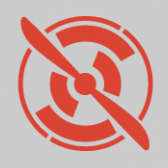

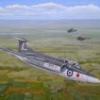
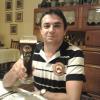

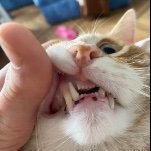

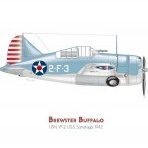
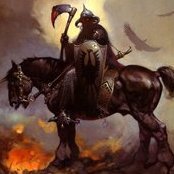
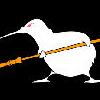

.thumb.jpg.b4a5069fd2c2dd5708ce1694345c5b11.jpg)


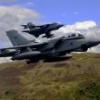

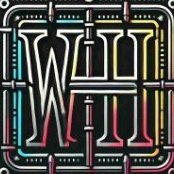
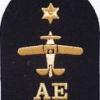
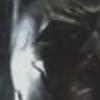
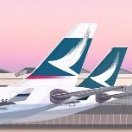

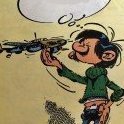
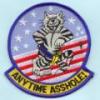
.thumb.jpg.d17ff607fc7e89ed057e63fcb6f2a888.jpg)
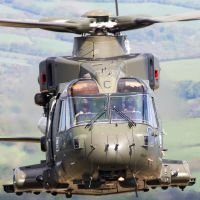
.thumb.jpeg.512869d47e412449d69d30d0295c1ae8.jpeg)